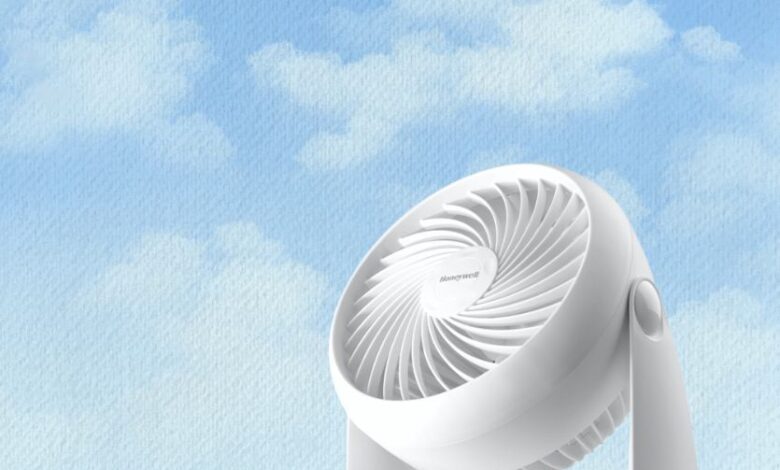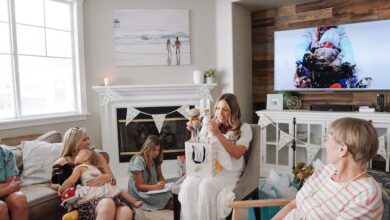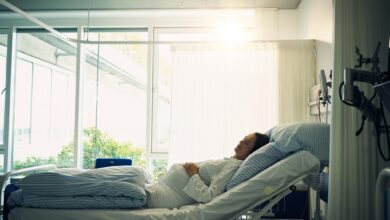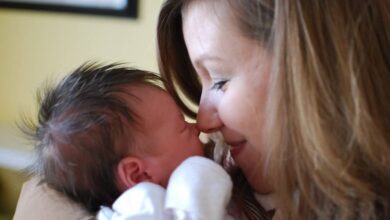Should You Have a Fan in Your Baby’s Room?

Many sleep-deprived new parents find themselves in an ever-difficult search for an uninterrupted night of shuteye. White noise, black out curtains, just-so room temperature, and a bedtime routine consisting of equal parts bath and story time and probably voodoo magic promise will do the trick.
While there are many ingredients that can help on the journey to a better night’s sleep, there is one that can also save your baby’s life – and that is the use of a ventilator.
How Can a Fan Save My Baby’s Life?
Although it’s not fun to think about, it’s important to recognize that SIDS is the leading cause of death in infants under one year of age in the United States.
Researchers continue to search for both the cause of SIDS and recommendations for parents to reduce the risk of sudden infant death syndrome. While no one can confidently point the finger at a culprit, one factor that has been shown to play a role is inadequate ventilation in a baby’s room.
What Are the Risks Associated with Lack of Airflow?
Lack of ventilation can allow for a buildup of carbon dioxide. When babies breathe, factors such as poor airflow, loose bedding, sleeping on their side or stomach, or having anything covering their head can result in higher levels of carbon dioxide being trapped nearby. in their nose and mouth and inhaled again. A study published in 2009 in The Archives of Pediatric & Adolescent Medicine found that running a room fan during a baby’s sleep reduced their risk of SIDS by 72%.
Does Fan Type Matter?
When looking for adequate air circulation in your baby’s nursery, you may wonder if a ceiling fan or a portable fan is the best option. While either will do the trick, there are a few things you’ll want to consider when making your choice.
- If you choose to use a portable fan such as a tower fan o table fan, make sure it has a stable base and is placed in a place where little fingers cannot reach the fan blades or even the unit itself. Also, make sure electrical cords are out of your baby’s reach. Honeywell makes a nice cheap table fan and Dyson makes great fans that don’t use blades. (I have a Dyson review here.)
- Nursery ceiling fans can be more effective at moving air through larger spaces, especially in warmer months when overheating is a risk factor. Hunter is a famous ceiling fan brand. A portable fan can be a good option in smaller rooms.
Can the fan be taught to the baby?
Whatever fan you choose, point it away from your baby’s crib to keep them comfortable and to allow air to circulate throughout the room.
Should You Use a Fan All Year Round?
Whether you use a portable fan or a ceiling fan, it can be used year-round. During the winter months, you may choose to lower the fan speed and give your baby an extra layer of clothing to keep them warm.
What Else Can I Do to Reduce the Risk of SIDS?
In addition to making sure your baby has a well-ventilated room, there are some other important factors to keep in mind to reduce the risk of SIDS in your newborn.
- Cool Room – While there is no specific temperature that experts have settled on as “the one”, anything below 72 degrees Fahrenheit (22 degrees Celsius) seems ideal. A cooler room temperature then adding an extra layer of clothing is recommended American Academy of Pediatrics.
- No Extras – Avoid having extra items such as blankets, hats, quilts, pillows or toys in your baby’s crib.
- Firm Mattress – Make sure your baby has a firm mattress to sleep on.
- Back to Sleep – Always put your baby to sleep on their back; never on their side or stomach.
- Use a pacifier – Even if the pacifier falls after your baby falls asleep.
- Smoke free environment – Smoke in your baby’s environment is a big risk factor for SIDS.
The Verdict on Whether You Should Have a Fan in Your Baby’s Room
Portable fans or ceiling fans can help prevent overheating and increase air circulation to stop carbon dioxide building up near your child’s mouth and nose – both of which can be risk factors in case of SIDS.
Fans can be used all year round and provide the added benefit of doubling as a white noise machine, so it’s definitely worth adding one to your baby’s room.
Our next reco: Checklist: Setting up a Safe Sleep Space





